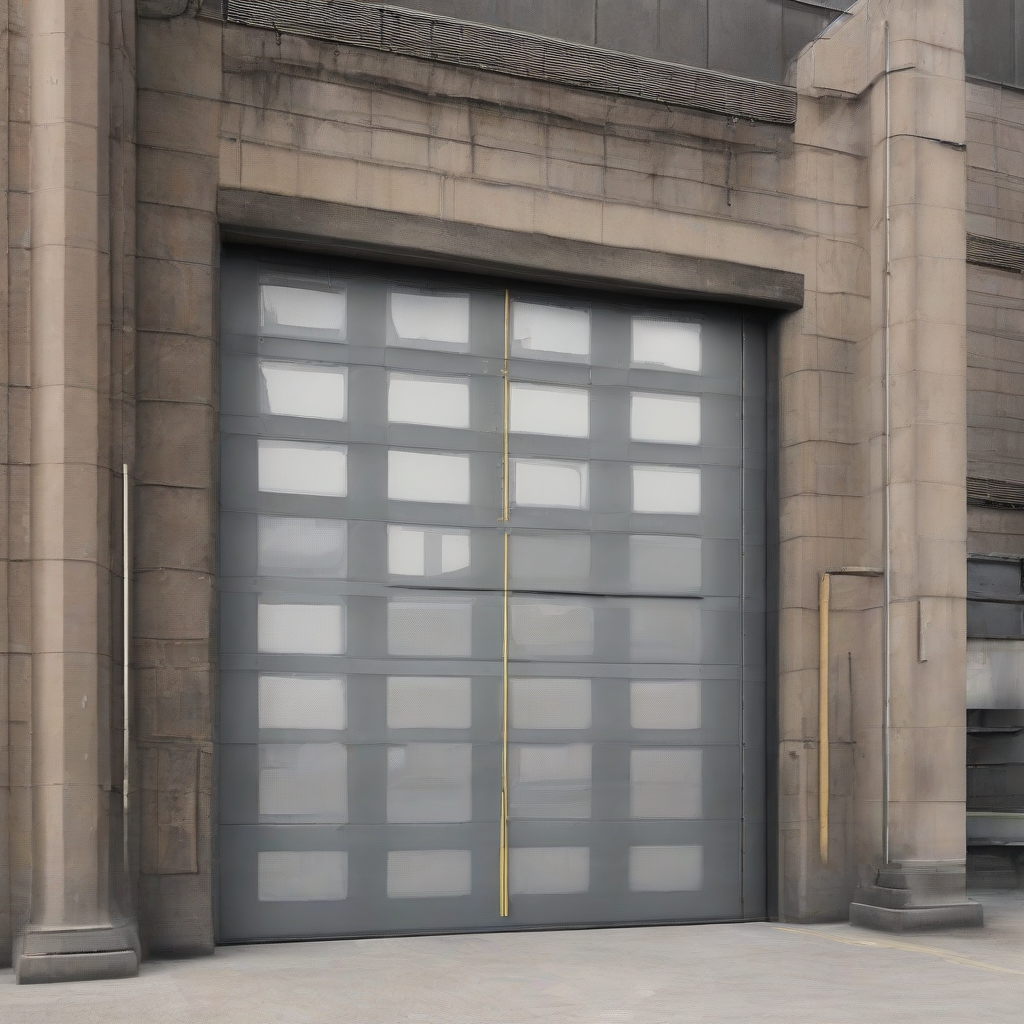Industrial Overhead Doors: A Comprehensive Guide to Types, Features, and Applications
Industrial overhead doors are critical components in various industrial and commercial settings, providing essential protection, security, and operational efficiency. This comprehensive guide explores the diverse range of industrial overhead door types, their key features, applications, and considerations for selection and maintenance.
Types of Industrial Overhead Doors
-
Rolling Steel Doors:
- Description: Rolling steel doors consist of interlocking steel slats that roll up vertically into a compact overhead coil. They are known for their robust security and durability.
- Features: High security, resistance to forced entry, various slat options (perforated, insulated), relatively low maintenance, available in various sizes and configurations.
- Applications: Warehouses, loading docks, storage facilities, high-security areas, manufacturing plants.
-
Sectional Overhead Doors:
- Description: Sectional doors are composed of multiple hinged sections that move upward and horizontally along tracks, providing smooth and efficient opening and closing.
- Features: Wide range of materials (steel, aluminum, fiberglass), insulation options for energy efficiency, customizable designs, various operating mechanisms (manual, electric, chain hoist).
- Applications: Garages, workshops, industrial buildings, loading docks, commercial facilities.
-
High-Speed Doors:
- Description: High-speed doors are designed for rapid opening and closing, minimizing interruptions in operations and maintaining environmental control.
- Features: Fast opening and closing speeds (seconds), energy efficiency (reducing heat loss and air infiltration), durable construction, various safety features (photocells, edge protection).
- Applications: Cold storage facilities, loading docks, cleanrooms, high-traffic areas where rapid access is crucial.
-
Fabric Doors:
- Description: Fabric doors use durable, flexible materials like PVC-coated polyester, offering a lightweight and efficient solution.
- Features: Quick and easy operation, transparent options for visibility, relatively low maintenance, suitable for large openings.
- Applications: Warehouses, loading docks, areas requiring frequent access and minimal obstruction.
-
Side-folding Doors:
- Description: Side-folding doors consist of panels that fold neatly to the side when opened, maximizing clear opening space.
- Features: Wide openings, space-saving design, suitable for large openings, various material options.
- Applications: Large industrial buildings, hangars, agricultural facilities.
Key Features and Considerations
-
Materials:
The choice of material significantly impacts the door’s durability, insulation properties, and overall cost. Steel offers strength and security, aluminum provides lightweight durability, and fiberglass offers corrosion resistance.
-
Insulation:
Insulated doors are crucial for maintaining temperature control, reducing energy costs, and improving workplace comfort. Insulation values (R-value) vary depending on the door type and construction.
-
Safety Features:
Safety is paramount. Features like photocells, edge sensors, and anti-crush mechanisms are crucial to prevent accidents and injuries.
-
Operating Mechanisms:
Manual, electric, and chain hoist mechanisms offer different levels of convenience and automation. Electric operators are often preferred for ease of use and integration with building management systems.
-
Security:
The level of security required depends on the application. Rolling steel doors generally offer superior security compared to sectional doors, while additional security measures like locks and alarms can be incorporated.
-
Weather Resistance:
Weather resistance is vital for outdoor applications. Features like weather stripping, seals, and robust construction are essential for protecting against wind, rain, and snow.
-
Maintenance:
Regular maintenance is essential to ensure the longevity and proper functioning of industrial overhead doors. This includes lubrication, inspection of components, and prompt repair of any damage.
-
Size and Configuration:
The dimensions and configuration of the door must be carefully considered to accommodate the opening and the specific needs of the application. Custom sizes and configurations are often available.
-
Compliance and Regulations:
Industrial overhead doors must comply with relevant safety and building codes. It’s vital to ensure the selected door meets all applicable regulations.
Applications of Industrial Overhead Doors
-
Warehousing and Distribution Centers:
Industrial overhead doors are essential for efficient loading and unloading of goods, maintaining climate control, and providing security.
-
Manufacturing Facilities:
They provide access to production areas, facilitate material handling, and ensure environmental control.
-
Cold Storage Facilities:
Insulated high-speed doors are critical for minimizing temperature fluctuations and energy consumption.
-
Automotive Repair Shops:
Large sectional doors provide ample access for vehicles and equipment.
-
Agricultural Facilities:
Doors designed for agricultural applications may need to withstand harsh environmental conditions and potentially accommodate large equipment.
-
Parking Garages:
Sectional or rolling steel doors enhance security and control access.
-
Commercial Buildings:
Industrial-style doors are used for loading docks, storage areas, and other applications where durability and security are needed.
Choosing the Right Industrial Overhead Door
- Assess your needs: Consider factors such as the size of the opening, required security level, environmental conditions, frequency of use, and budget.
- Consult with professionals: Work with experienced door suppliers and installers to determine the best type of door for your application.
- Obtain multiple quotes: Compare prices and features from different suppliers before making a decision.
- Check warranties and maintenance agreements: Ensure that the supplier offers adequate warranties and maintenance support.
Maintenance and Repair
- Regular inspections: Conduct regular inspections to identify potential problems early on.
- Lubrication: Keep moving parts lubricated to ensure smooth operation and prevent premature wear.
- Cleaning: Regularly clean the door to prevent corrosion and maintain its appearance.
- Repair and replacement: Address any damage or malfunction promptly to prevent further problems and ensure safety.
